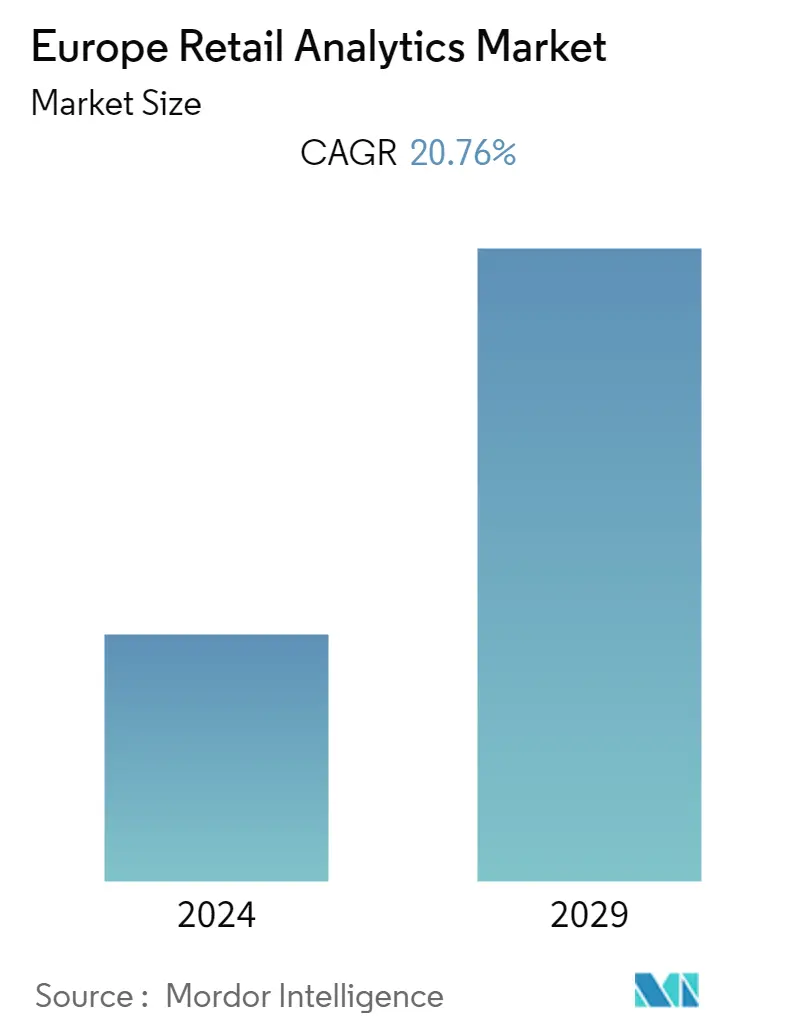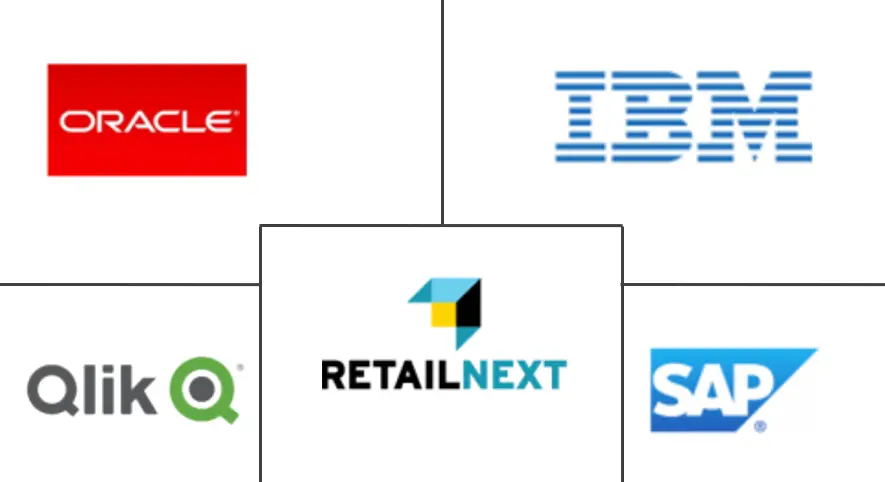Market Size of Europe Retail Analytics Industry

| Study Period | 2019 - 2029 |
| Base Year For Estimation | 2023 |
| Forecast Data Period | 2024 - 2029 |
| Historical Data Period | 2019 - 2022 |
| CAGR | 20.76 % |
| Market Concentration | Medium |
Major Players
*Disclaimer: Major Players sorted in no particular order |
Need a report that reflects how COVID-19 has impacted this market and its growth?
Retail Analytics Market Analysis
The European retail analytics market is expected to grow at a CAGR of 20.76% during the forecast period. A sustained increase in expenditures in AI-based digital tools to address supply chain irregularities and retail shrinkage will give a huge potential for retail analytics providers. Europe also has many major retail brands and companies that support online presence, which is expected to encourage a lucrative demand for retail analytics in the region.
- The driving factor for using retail analytics in the region is that it provides tangible and practical insights into customer behavior. Retail analytics services are designed to give each consumer tailored attention. Companies have used data-driven retail analytics solutions that keep customers engaged with the company for a longer period in response to changing consumer needs and increasing rivalry among retailers for customer loyalty. Retail predictive analytics allows retailers to evaluate customer data and anticipate client wants and desires.
- Furthermore, from a customer-centric standpoint, implementing a retail analytics strategy is intended to offer businesses the resources and technology required to create and automate seamless consumer experiences across online channels. Customer experiences are improving as more retailers implement customer relationship management (CRM) systems. Furthermore, the increased use of IoT, POS, RFID and other smart devices generates enormous data, which merchants can utilize to find client buying preferences and hidden customer insights. As a result, retailers primarily focus on improving customer experience, which is expected to immediately drive demand for retail analytics services and software in the coming years.
- A retailer's primary resources are product inventory and shelf space allotment. It refers to the use of analytics to decide product offers in the right place, at the right time, and in the appropriate quantity for the right customers. In terms of micro-level analysis and assortment planning, this trend has now become a constant process in the retail industry. Shelf space management is being studied in relation to client preferences in the store and the financial impact of various assortments.
- For instance, Trax Ltd. and Roamler, two European startups, have joined forces to provide shop auditing services to consumer packaged goods (CPG) corporations. Companies constantly capture shelf photos and provide insights about shelf conditions. It improves product availability on the shelf and enables merchants to get timely insights and make decisions to improve shopper experiences.
- Business intelligence tools like decision support systems (DSS) have allowed companies in Europe to produce stress tests and sales forecasts, which are significantly used to assess a company's ability to operate under challenging economic scenarios. Utilizing DSS, companies can perform sensitivity analyses to evaluate the impacts of external variables, such as a possible lockdown or employee sickness, on their operations. Companies that favor data-driven decision-making are more expected to manage the crisis better and recover faster than businesses that do not use analytics and business intelligence.
